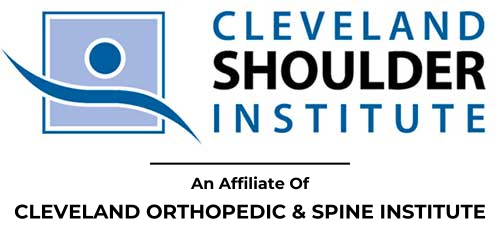Surgical Repair of the Rotator Cuff
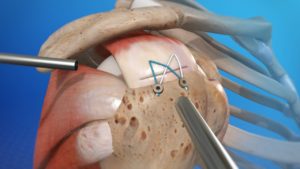 Surgery to repair a torn rotator cuff often involves re-attaching the tendon to the head of humerus. A partial tear, however, may only need a trimming or smoothing procedure called a debridement. A complete tear is repaired by stitching the tendon back to its original site on the humerus.
Surgery to repair a torn rotator cuff often involves re-attaching the tendon to the head of humerus. A partial tear, however, may only need a trimming or smoothing procedure called a debridement. A complete tear is repaired by stitching the tendon back to its original site on the humerus.
Advancements in surgical techniques for rotator cuff repair include less invasive procedures. While each of the methods available has its own advantages and disadvantages, all have the same goal: getting the tendon to heal. The type of repair performed depends on several factors, including the size of your tear, your anatomy, and the quality of the tendon tissue and bone. The surgical repair can be done on an outpatient basis and do not require you to stay overnight in the hospital. Download more surgical details.
Studying our Patients Progress After Surgery
Dr. Gobezie is passionate about closely following his patients’ outcomes to surgery. Not all surgeons take the time to do this. Before surgery, we ask all our patients to complete a standardized questionnaire about their shoulder. We continue to follow each patient’s improvement at certain time points after surgery. Pairing these standardized surveys with follow-up visits gives our practice a concrete way to measure our patients’ outcomes.
What do our results mean?
The data we have studied from patients we have treated at the Gobezie Shoulder Institute shows above-average patient-reported outcomes in regards to pain and function. Published studies have indicated that the more times a surgeon performs a surgery, the better the patient outcomes. Additionally, high volume surgeons are able to provide value-based care, that is better outcomes over cost. Dr. Gobezie is not only a top performing surgeon in Ohio but also one of the most experienced and efficient in the country. Each year, he performs more than 350 shoulder replacements and more than 400 arthroscopic shoulder procedures.
Patient Outcomes – Rotator Cuff Repairs
On average, RCR patients in the Gobezie Shoulder Institute study rate their shoulder at about 37% of normal prior to surgery and at two years they rate their shoulder at about 79% of normal. In terms of pain, patients average 5 out of 10 pain prior to surgery and report pain of 1 after surgery. Similarly, the ASES pain and function score improve from 44 to 85.
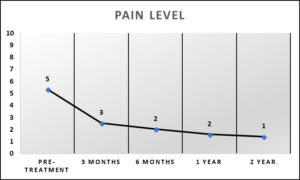
Pain scores indicate the patients level of pain from pre-surgery to two years after surgery.
All graphs show marked improvement in pain and function in the first 3 months after surgery.
These outcomes continue to improve through one and two-years post-surgery.
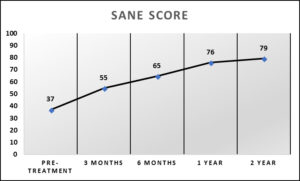
The SANE score represents how a patient rates his shoulder as a percentage of normal, 0% to 100% with 100% being normal.
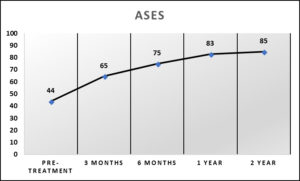
The ASES score is a standard shoulder assessment that measures pain
and functional limitations of daily activities on a 100-point scale.
A maximum ASES score of 100 indicates minimal shoulder pain and maximal shoulder function.
